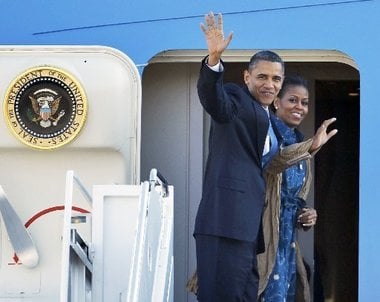
Mr. Obama once dubbed himself the “Pacific president”, and rightly so.
Less than two years ago, the newly-incumbent Obama Administration began to evaluate its overarching national security strategy for the U.S.. Newly appointed policymakers felt that the strategic focus of the U.S., at the time, was overly biased on the Middle East. When analyzed over the long-term, the Administration sensed that America’s geopolitical interests were indeed concentrated further East, with a center of gravity predominantly focused on the Pacific Rim.
It is no surprise, therefore, that the assembled presidential delegation is headed to India, with follow-on summitry scheduled in Seoul for the G-20 meeting and later thereafter at the Asia-Pacific Economic conference in Tokyo. The official visit, accompanied by a reinvigorated diplomatic thrust into the region, will seek to strengthen commercial ties and stimulate security cooperation between the U.S. and its Asian partners. These events, moreover, follow several years of seemingly rapacious senior-level interaction between the U.S. Administration and its Asian counterparts.
Even so, as the U.S. has been foremost a Pacific power historically since as early as the late 19th Century, the Obama Administration’s foreign policy vis-à-vis India and the Far East represents less of a fundamental shift in priorities, but perhaps more of a return to traditional normalcy.